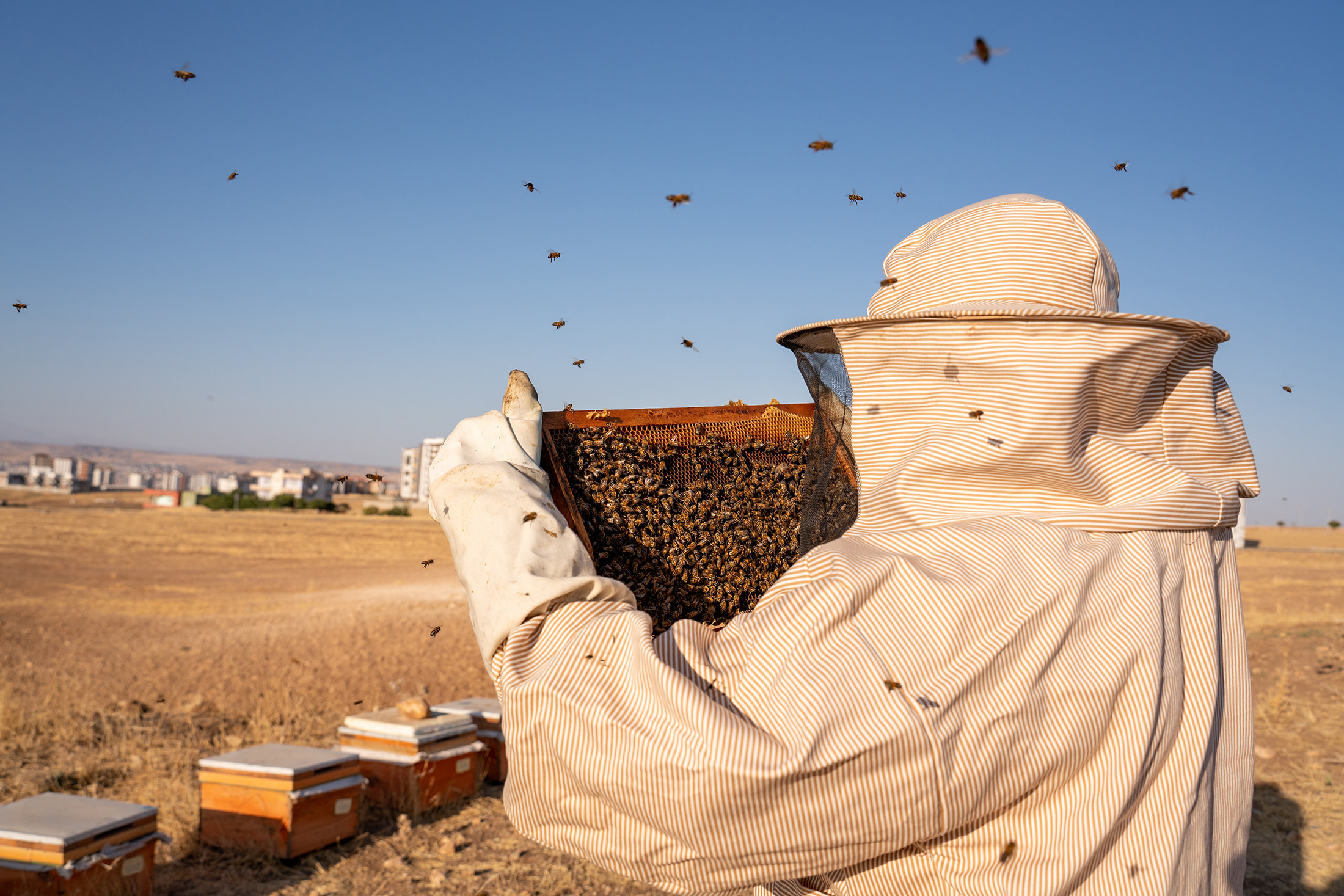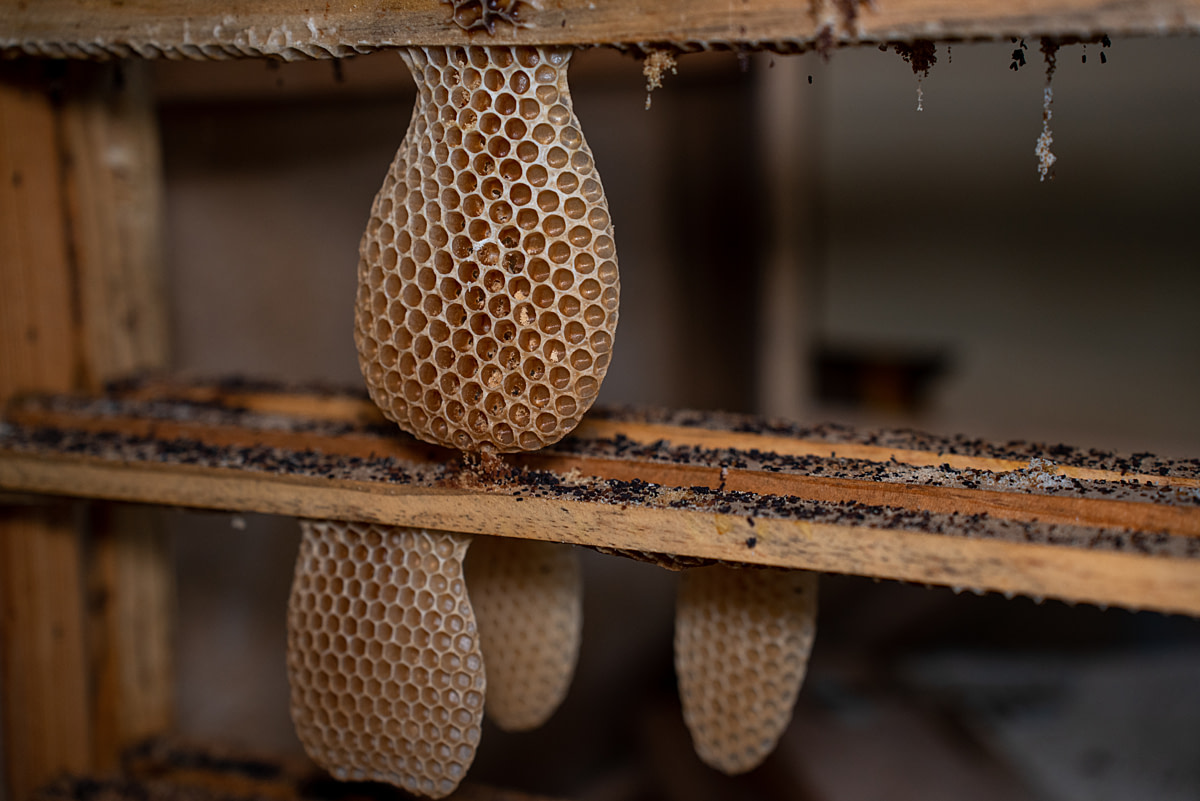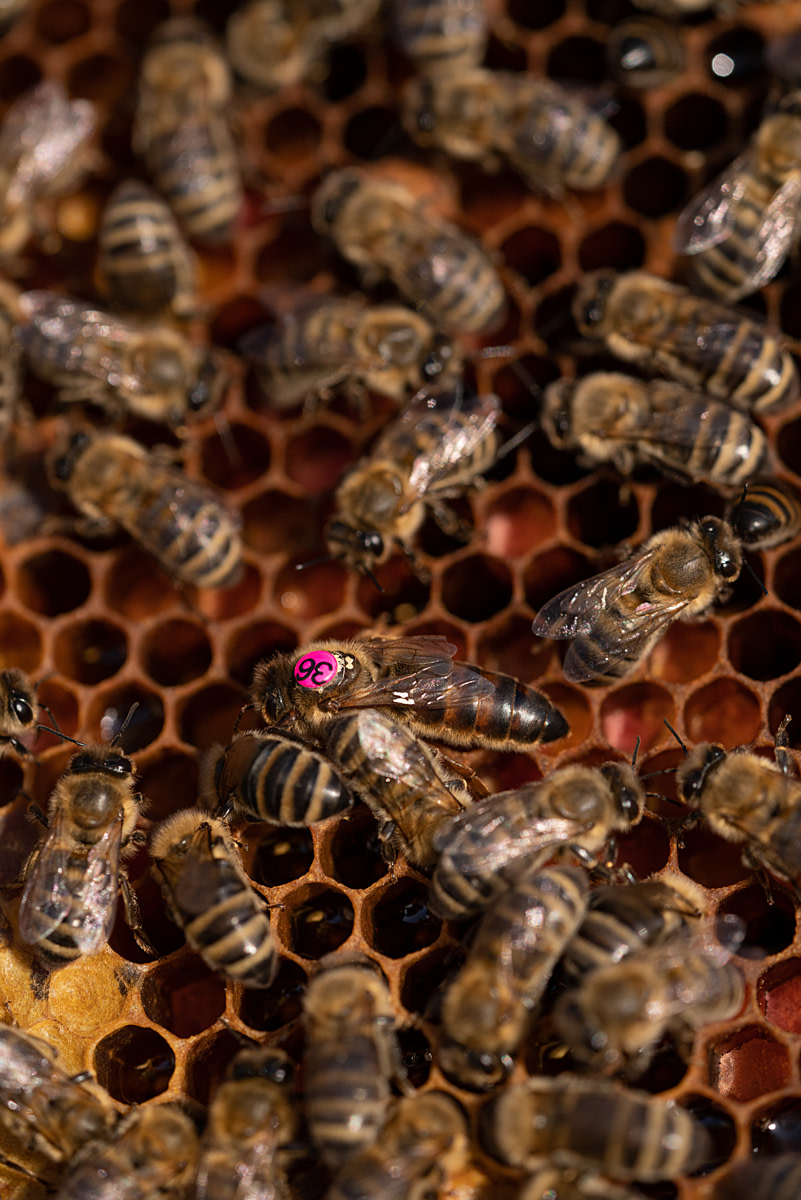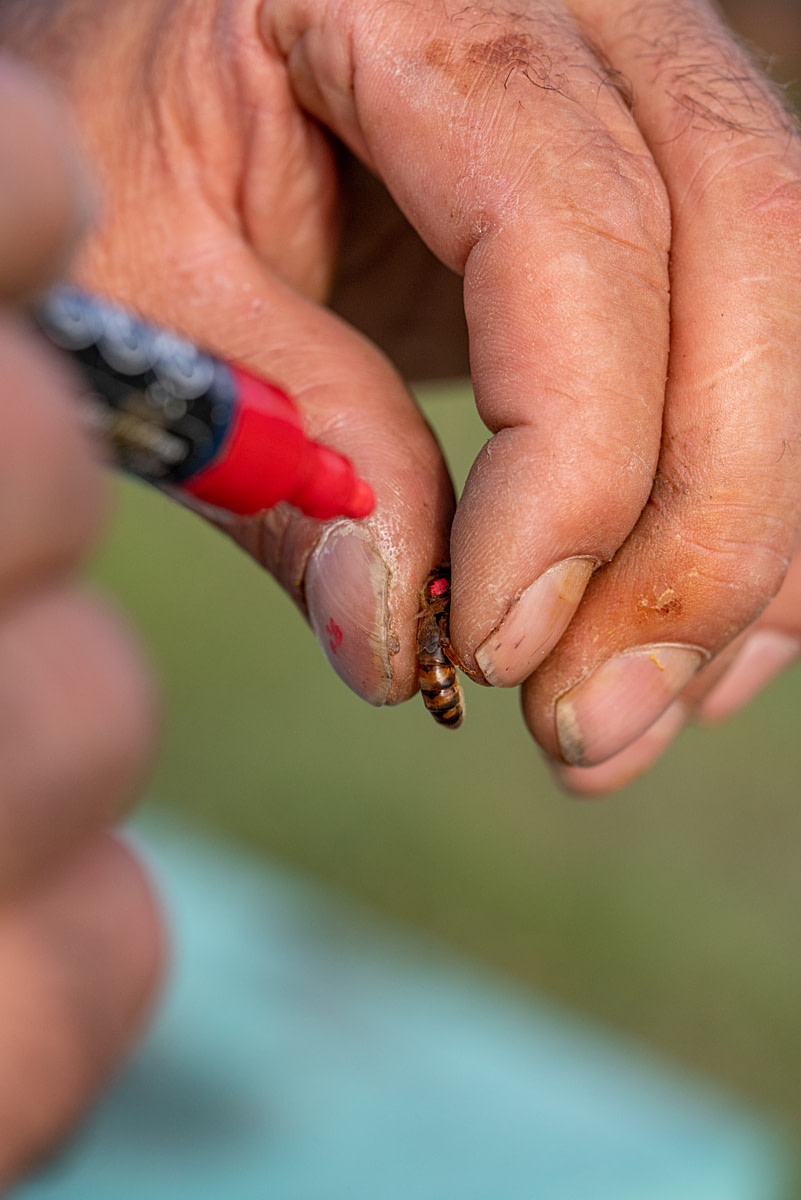Bees occupy a bee frame that a producer removed from the hive to inspect and control the hive’s honey and bee egg production. Turkiye, 2023.
Havva Zorlu / We Animals
For her 2023 Animal Photojournalism Fellowship, Havva Zorlu delved deep into various animal industries in her home country of Türkiye, including the unseen experiences of bees used for honey production. These visuals offer a rare glimpse into the lives of these remarkable insects.
Türkiye’s varied flora, geography, and climate have given rise to the widespread practice of beekeeping and honey production, making it one of the world’s biggest honey and beeswax producers. Beekeeping is widely practiced in the province of Yalova in the northwestern Marmara region, and apiaries are a common sight in Batman province in Southeastern Anatolia.
Photographer/Videographer: Havva Zorlu
Bees fill the frames of two naturally formed “Black Hive” honeycombs. In standard honey production, beekeepers insert ready-made frames pre-filled with beeswax into the hives. Black Hive honey is produced from hives where the honeycomb is created entirely by worker bees. Batman, Batman Province, Southeastern Anatolia Region, Turkiye, 2023.
Havva Zorlu / We Animals
Aerial view of dozens of honey production bee hives in a mountainside apiary. Bees require close access to forest areas to meet their nutritional needs. Kozluk, Batman, Batman Province, Southeastern Anatolia Region, Turkiye, 2023.
Havva Zorlu / We Animals
“As a photojournalist, I often question things and strive to highlight the relationship between animal uses and culture. For this reason, I chose locations where I could observe different cultures and document the stories of animals living in captivity or slaughtered through animal husbandry activities in various regions of Türkiye.” ― Havva Zorlu, animal photojournalist
In the warmer months, bees collect nectar from flowers, delivering it back to their hive for worker bees to process into nectar and honey. Worker bees place this honey inside the hive’s honeycomb cells, covering it with a beeswax seal for preservation. Honey is an indispensable food source for bees and is stocked in the hive to ensure winter survival when outside pollen and nectar sources are scarce or non-existent. Despite this fact, most of the honey that bees store for themselves is taken by us, humans.
Beekeepers remove most of the bees’ honey by first removing the frames containing the honeycomb from the hive, then removing the caps from the honeycomb, and finally spinning the frames in an extractor to expel the honey. During winter, beekeepers feed the bees with artificial foods such as pollen cakes, syrup made from refined sugars, or commercially prepared syrups or fondants to replace the bees’ honey.
Though producers market honey as a natural product, many apiary production models medicate the bees and utilize food supplements. Some also use modern technology to artificially inseminate certain queen bee species to control genes and the breeding process for increased honey yield.
Honey-filled beeswax falls from a beehive frame as a honey producer slices it away to access the honey inside. Once the wax is scraped away, the producer will quickly place the honeycomb into an extraction machine to remove the rest of the honey. Ciftlikkoy, Yalova, Yalova Province, Marmara Region, Turkiye, 2023.
Havva Zorlu / We Animals
A honey bee queen can live for up to five years, as long as she is free from disease, though some beekeepers actively replace the queen after only one or two years. During this time, the queen must stay in the hive for honey production to continue, so producers cut off one-third of her wings to minimize the chances of her departing. Worker bees born in the spring or summer when the hive is most active may only live for two to six weeks since they are so busy collecting nectar and pollen, feeding larvae and producing honeycomb.
A queen bee with clipped wings and born through artificial insemination bears the number “36” as she crawls on top of a honeycomb at a honey production apiary. Each bee colony has only one queen bee, whose sole duty is to constantly lay eggs, ensuring the colony’s continuity. Ciftlikkoy, Yalova, Yalova Province, Marmara Region, Turkiye, 2023.
Havva Zorlu / We Animals
A queen bee is marked with a red pen to identify her by year for age tracking, a colour the producer changes annually for each new generation of queens. Queens at this apiary also have clipped wings to prevent them from leaving the colony. Ciftlikkoy, Yalova, Yalova Province, Marmara Region, Turkiye, 2023.
Havva Zorlu / We Animals
“Animal abuse and exploitation are common everywhere, at all times. Therefore, as animal photojournalists, we have many stories to tell.” ― Havva Zorlu
Bees are among the animal species we know the least about. That may make it hard to relate to them, to empathize with them. But does this make what we do to them any less of a violation?
Through these compelling and informative visuals, Havva strives to ignite our curiosity and bring us closer to these small but mighty creatures. She asks us to consider bees in a new light–not just from the lens of the precious food source they produce.



















Turkiye, 2023.
Havva Zorlu / We Animals
Explore more of Havva’s Fellowship visuals via the We Animals stock platform. We’ll be publishing more visuals and stories from Havva’s Fellowship portfolio throughout the year.
Photographer/Videographer: Havva Zorlu
Explore and download visuals from this assignment via our stock platform and help tell these underreported stories.





